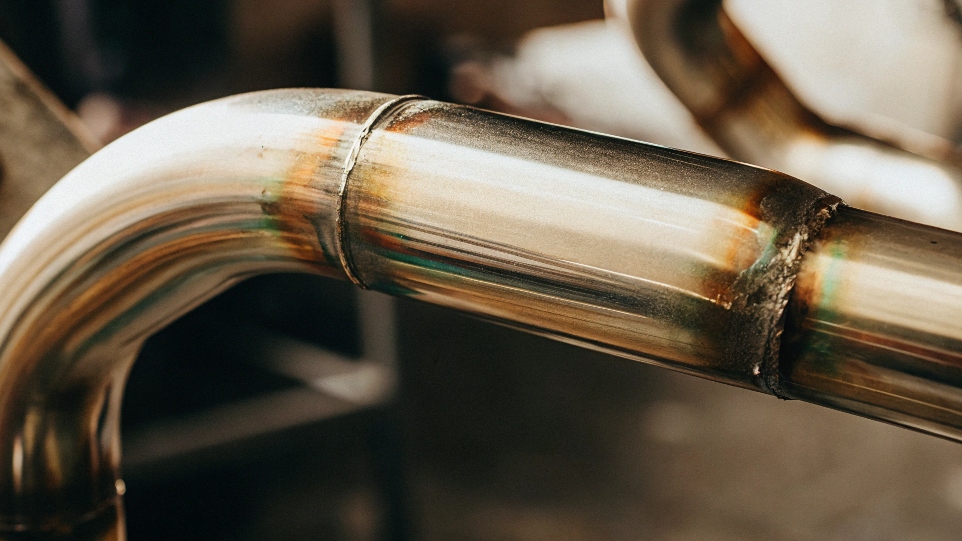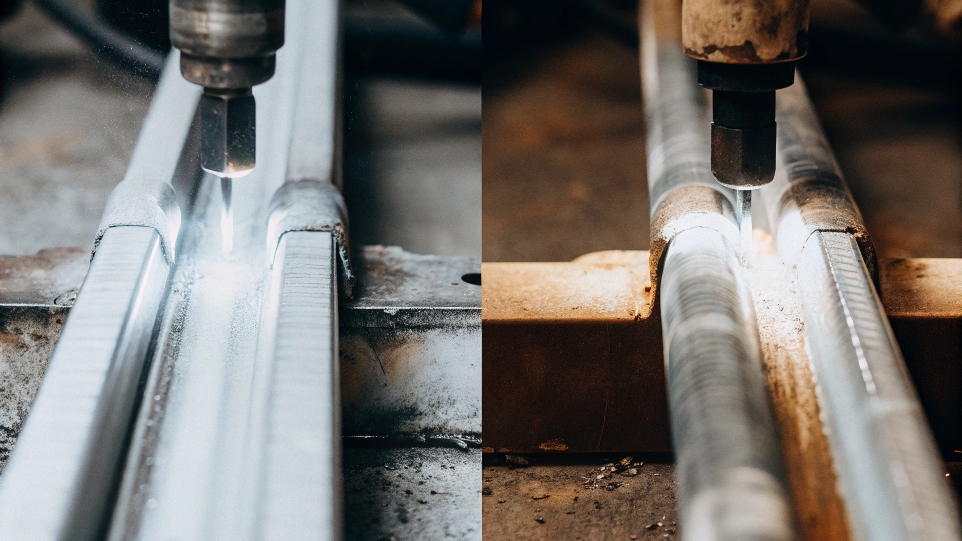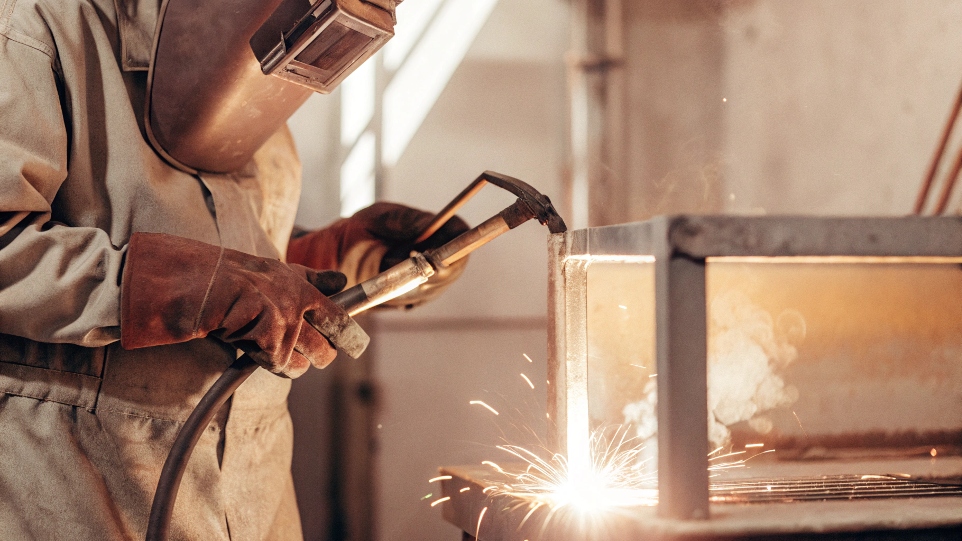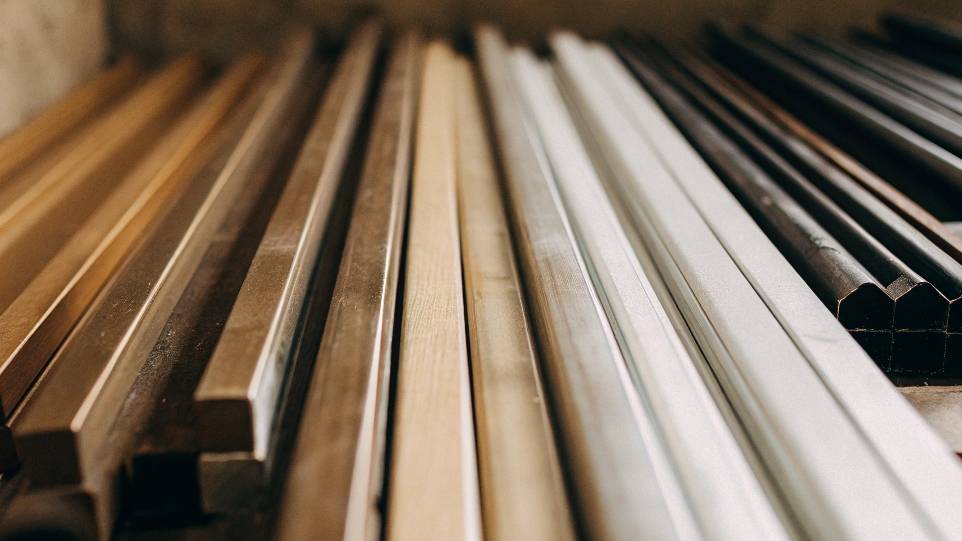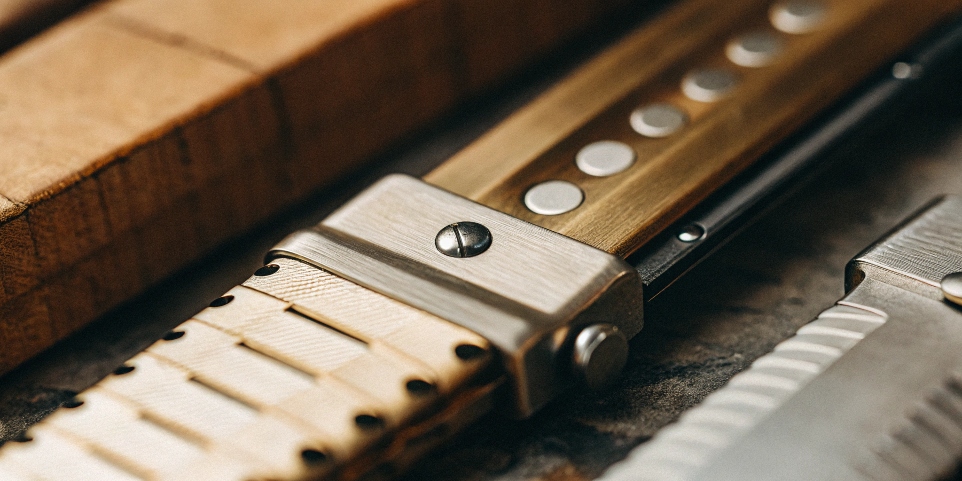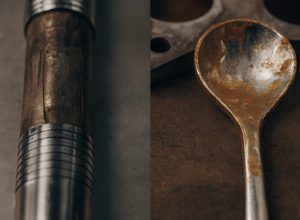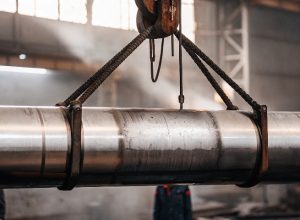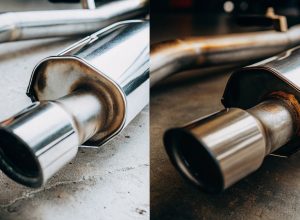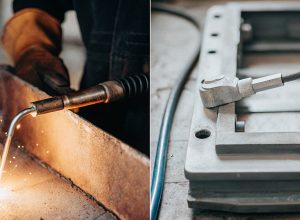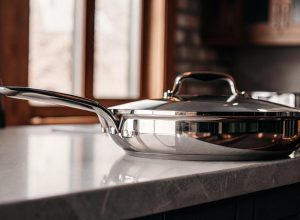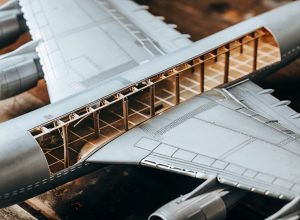¿Tiene problemas con las frágiles soldaduras de titanio? La contaminación puede arruinar materiales caros y detener un proyecto en seco, costándole tiempo y dinero.
Sí, el titanio suele ser más difícil de soldar que el acero inoxidable. Exige una soldadura completamente pura, escudo de gas inerte1 to prevent contamination from the air. This contamination can make the final weld brittle and cause it to fail under stress, a problem stainless steel doesn’t have.
Understanding why titanium needs such special care is the first step. The difficulty isn’t just about a welder’s skill; it’s about the basic chemistry of the metal. Let’s break down what makes welding titanium a unique challenge. This knowledge will help you source materials and plan your projects much better. It will also help you advise your own customers, like I do with clients such as Ahmed, a metal distributor in Turkey.
¿Es el titanio más difícil de soldar que el acero inoxidable?
¿Alguna vez se ha preguntado por qué sus soldaduras de titanio parecen perfectas pero fallan bajo tensión? El enemigo invisible es la contaminación atmosférica, un problema mucho menos común cuando se suelda acero inoxidable.
La soldadura del titanio es más dura porque el metal tiene una alta reactividad con el oxígeno, el nitrógeno y el hidrógeno. Esta reacción se produce a temperaturas superiores a 427°C (800°F). Requiere una atmósfera prístina de gas argón inerte, mientras que el acero inoxidable es más indulgente y a menudo solo necesita una protección de gas estándar.
El papel crucial del blindaje
The core difference comes down to how each metal behaves when it gets hot. Stainless steel contains chromium, which forms a thin, tough, and self-healing layer of chromium oxide on the surface. This layer protects the metal underneath. When you weld titanium, the situation is the opposite. Hot titanium is like a sponge for gases in the air, especially oxygen. It eagerly absorbs them, which creates brittle spots in the metal. This damage is permanent. You can’t fix it. To prevent this, you must shield the titanium from all air until it cools down. This means using a primary shield from the torch, a "trailing shield" that follows the torch, and a "contrapurgado2" para proteger la parte posterior de la soldadura. He visto proyectos fracasar porque la purga posterior no se ha configurado correctamente.
Propiedades del material a temperaturas de soldadura
In my facility, we use special argon shielding chambers for critical medical and aerospace parts. We have to do this because the standards for these industries are incredibly high. A small amount of contamination can lead to catastrophic failure. For Ahmed’s business in Turkey, I advised him to set up a dedicated "clean area" just for titanium work. This prevents any cross-contamination from other metal fabrication, ensuring his customers get the pure, strong welds they expect. The table below shows the key differences.
| Característica | Soldadura de titanio | Soldadura de acero inoxidable |
|---|---|---|
| Desafío principal | Reactividad con el aire a alta temperatura | Distorsión por calor, sensibilización |
| Gas de protección | 100% Argón puro | Mezclas de argón/CO2 utilizadas a menudo |
| Método de blindaje | Antorcha, escudo de arrastre y contrapurgador | A menudo sólo el blindaje de la antorcha |
| Charco de soldadura | Fluido y muy claro cuando está limpio | Más viscoso y lento |
| Color post-soldadura | De paja clara a azul es bueno | La decoloración oscura indica calor |
¿Es difícil soldar titanio?
¿Le preocupa el alto nivel de destreza necesario para trabajar el titanio? Es cierto que los errores salen caros, pero el proceso es muy manejable con la formación y preparación adecuadas.
Sí, el titanio se considera un material difícil de soldar. El proceso no perdona. La limpieza absoluta es crítica, y el soldador debe ser muy hábil para mantener un escudo de gas inerte perfecto. Cualquier pequeño error puede hacer que la soldadura se vuelva quebradiza e inútil.
Lo no negociable: La limpieza
You cannot overstate the need for cleanliness. Before you strike an arc, the titanium part and the filler rod must be perfectly clean. This means using a specific solvent, like acetone, to wipe down all surfaces. You have to remove every trace of oil, dirt, paint, or moisture. Even the oil from a fingerprint can introduce enough hydrogen and carbon to ruin a weld. I remember a case back in 2012 with a client. Their parts were failing quality control tests over and over. After a long investigation, we traced the problem back to the welder’s gloves. They were not changing them often enough, and a small amount of contamination was getting onto the filler rods. We changed the procedure, and the problem disappeared.
The Welder’s Skill and Technique
Soldar titanio es un trabajo para expertos. Desde 2008, hemos convertido en norma que cualquiera de nuestros socios fabricantes disponga de programas de formación específicos sobre titanio para sus soldadores. Un soldador de titanio necesita un control increíble. Suelen utilizar el proceso TIG (gas inerte de tungsteno) porque ofrece un control preciso del calor. El soldador debe mantener el extremo caliente de la varilla de relleno bajo el flujo de gas argón en todo momento. Si la saca de la pantalla de gas, se contaminará y la varilla se convertirá en chatarra. También deben asegurarse de que el gas argón siga fluyendo sobre la soldadura hasta que se enfríe por debajo de 427 °C (800 °F). Esto requiere paciencia y un profundo conocimiento del material.
¿Qué metal es el más difícil de soldar?
¿Cree que el titanio es el reto definitivo de la soldadura? Hay otros metales que pueden poner nerviosos incluso a los soldadores más experimentados debido a sus delicadas propiedades.
Aunque el titanio es muy difícil, muchos expertos afirman que el magnesio es el metal más difícil de soldar en el uso industrial común. Su alta conductividad térmica, bajo punto de fusión y riesgo extremo de incendio lo hacen excepcionalmente difícil y peligroso sin procedimientos muy especializados.
Un espectro de dificultades
The term "most difficult" really depends on what you mean. Different metals present different problems. Titanium’s main challenge is its reactivity with the atmosphere, which is a chemical problem. You solve it with perfect cleanliness and shielding. Other metals are difficult for physical reasons. For example, some high-strength aluminum alloys are very prone to cracking right after they are welded. Aluminum also conducts heat so well that it can be hard to get a good charco de soldadura3 started without distorting the whole part. This makes the welder’s job very different from welding titanium or steel. For a distributor like Ahmed, understanding this spectrum helps him manage his inventory and talk to customers.
Por qué otros metales pueden ser más duros
Magnesium is a great example of a harder metal to weld. It burns in open air, so there is a serious fire risk if you are not careful. It also has a very low melting point and transfers heat quickly, so it’s easy to melt through the part. Refractory metals like tungsten and molybdenum have the opposite problem. Their melting points are so high that you need a huge amount of energy to weld them. Compared to these, titanium’s challenges, while serious, are very well-understood. The table below gives a rough idea of how these metals compare.
| Metal | Reto de soldadura primaria | Dificultad relativa |
|---|---|---|
| Magnesio | Extrema inflamabilidad, alta conductividad | Muy alta |
| Titanio | Reactividad con la atmósfera (contaminación) | Alta |
| Aluminio | Capa de óxido, porosidad, alta conductividad | Media a alta |
| Acero inoxidable | Distorsión térmica, precipitación de carburo | Medio |
| Acero dulce | Generalmente indulgente | Bajo |
¿Es más resistente el titanio o el acero inoxidable?
¿Está eligiendo entre titanio y acero inoxidable para un trabajo exigente? Elegir el equivocado por no haber entendido bien la "dureza" puede provocar fallos inesperados y costosos rediseños.
It depends on how you define "tough." Titanium has a much higher strength-to-weight ratio, so it’s "tougher" for its weight. However, some stainless steel alloys offer better ductility and impact resistance. This makes them "tougher" against sudden shocks or bending.
Strength-to-Weight Ratio: Titanium’s Edge
"Toughness" in engineering means a material’s ability to absorb energy and deform without breaking. But in everyday talk, people often mix it up with strength. Titanium’s biggest advantage is its incredible strength for how little it weighs. The most common alloy, Grade 5 (Ti-6Al-4V), is as strong as many steels but at nearly half the weight. This is why it is the top choice for aerospace parts like landing gear or engine components. For these applications, where every gram matters, titanium is clearly the "tougher" material because it provides the required strength with a massive weight saving. No steel can compete with that.
Ductilidad y resistencia al impacto: ¿Un triunfo para el acero?
Sin embargo, la resistencia no lo es todo. La ductilidad también forma parte de la dureza. La ductilidad es la capacidad de un material para doblarse o estirarse antes de romperse. En este caso, muchos aceros inoxidables, como el 316L, son mejores que las aleaciones de titanio. Pueden estirarse mucho más antes de fracturarse. Por eso absorben mejor los impactos repentinos. Piense en la barandilla de un barco. Si algo la golpea, debe doblarse, no romperse. Esta es una forma de tenacidad en la que algunos aceros inoxidables tienen ventaja. Cuando aconsejo a mis clientes, les digo que se pregunten por el trabajo concreto. ¿Es el peso el problema principal o es probable que la pieza reciba golpes fuertes? La respuesta le dirá qué material es realmente más resistente para esa situación.
| Propiedad | Titanio de grado 5 típico | Acero inoxidable 316L típico |
|---|---|---|
| Densidad | ~4,43 g/cm³ | ~8,0 g/cm³ |
| Resistencia a la tracción | ~950 MPa | ~580 MPa |
| Fuerza-peso | Muy alta | Medio |
| Ductilidad (alargamiento %) | ~14% | ~40% |
| Lo mejor para | Piezas ligeras y muy resistentes | Resistencia a la corrosión, alto impacto |
Conclusión
En resumen, la soldadura del titanio es más dura que la del acero inoxidable debido a los riesgos de contaminación, y su tenacidad depende de la aplicación. Un conocimiento adecuado garantiza el éxito de la fabricación y la selección del material.
-
Descubra cómo un escudo de gas inerte evita la contaminación y garantiza soldaduras de titanio resistentes. ↩
-
Conozca la técnica de retropurga y su función en la protección de las soldaduras de titanio frente a la contaminación. ↩
-
Comprender las características de un charco de soldadura y su importancia para conseguir soldaduras de calidad. ↩

